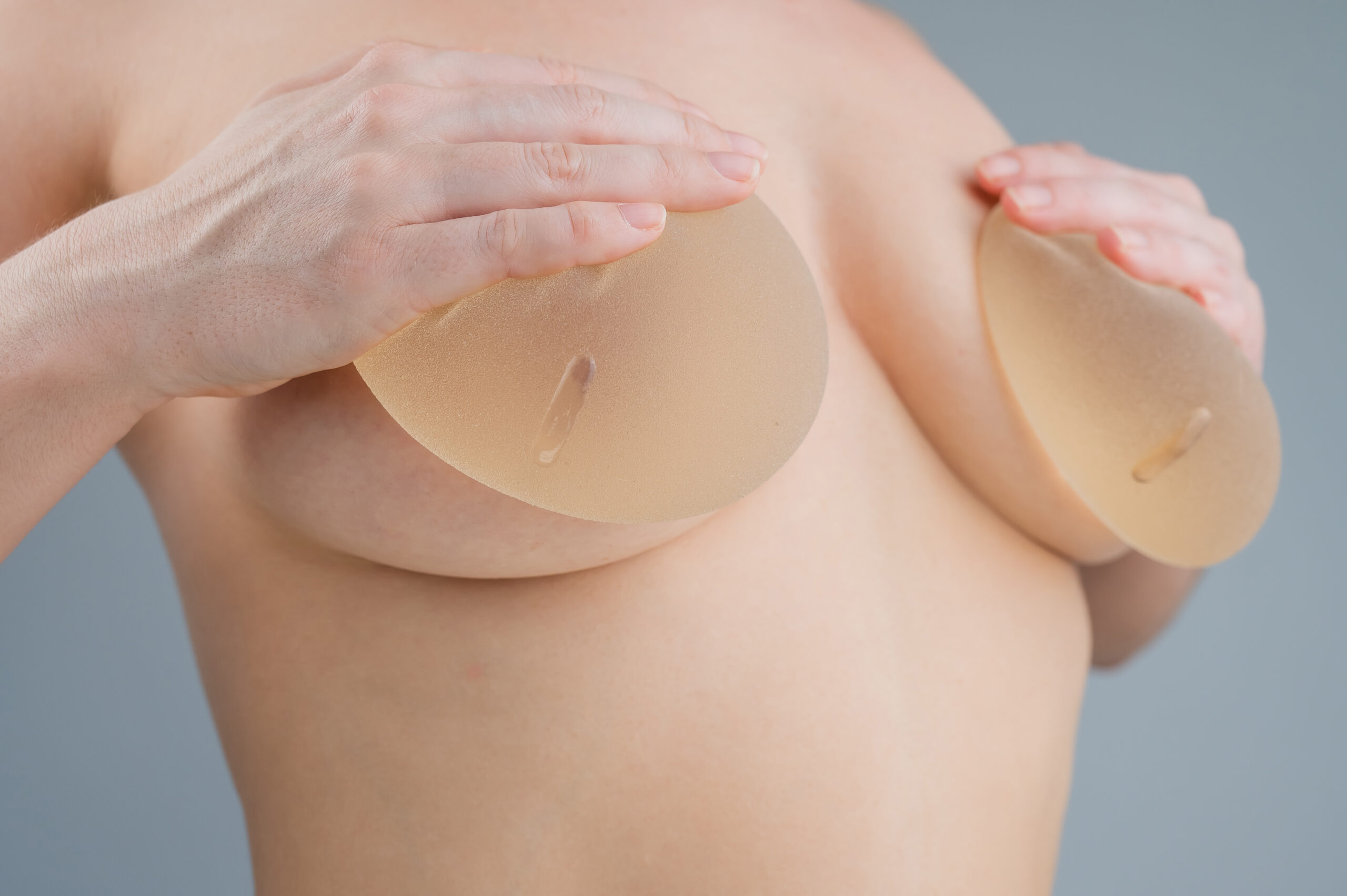As with any type of surgery, breast augmentation will cause scar tissue to form and create visible scars on your body. Many patients worry that these scars will affect the outcome of the procedure and make them even more self-conscious.
Thankfully, Mr Pieri is here to explain everything you need to know about breast implant scars and how they affect the outcome of breast augmentation procedures.
What Are Breast Implant Scars?
Simply put, breast augmentation scars are marks that show where the surgical incisions were made to insert the breast implants into the body.
The type of scar you will get depends on the incision type used by your surgeon and where they choose to make their cuts.
What Type Of Boob Job Incisions Are There?
There are several breast augmentation incision types, and the one that you have will impact the type of breast surgery scars you are left with.
The three main types of breast implant incisions are:
Inframammary Fold Incision
The breast crease, also known as the inframammary fold, is often considered the best option by many breast surgeons. This is because when the inframammary incision technique is used, the scar is usually more hidden than when other options are used. It is also a great solution for allowing the surgeon to accurately place your breast implants and ensure you get the right results from the procedure.
With an inframammary fold incision, you can usually hide the scar under your breast crease, meaning it won’t be very visible in the future. For women with tight skin around the breast area or who are looking for a small breast augmentation, it might still be noticeable, but many women get great results from inframammary incisions.
Peri-Areolar Incision
The peri-areolar incision type is less common and more noticeable than the inframammary incision. Peri-areolar incisions are made by cutting around the edge of the areola, and then placing the breast implant through the opening into the pocket created behind the breast.
Because peri-areolar incisions are on the front of the breast, the surgeon has to cut through the breast tissue to get down to the plane between the breast tissue and muscle (or sometimes deeper, below the muscle). This necessity to cut through the breast tissue means that there may be a higher risk of impacting the ability to breastfeed. Therefore, they are not ideal for women who want to consider breastfeeding or getting pregnant after their breast augmentation. An incision in the crease under the breast is probably better in these patients.
Trans-Axillary Incision
The final option is a trans-axillary incision, which involves making a cut in the armpit and using this incision to insert the breast implant. Patients who opt for a trans-axillary incision won’t get scarring on the breast itself and the incision is often well hidden in the armpit area.
In the UK, it is not often chosen by breast or plastic surgeons. This is because some evidence suggests that it is the most likely incision to increase the risk of capsular contracture, which is where the scar tissue around the implant can increase and become hard, giving a less natural result and sometimes becoming painful.

What Types Of Breast Implant Scars Are There When a Breast Uplift is Also Performed?
Breast uplift scars are named after their shape. Depending on the type of breast surgical procedure you get, you may have multiple types of scars. The main types are:
Doughnut Scars
A doughnut scar or “circumareola mastopexy scar” is used when only a small amount of breast uplift is required. This gives a scar that runs the whole way around the areola. It can also be used to perform an areola reduction operation, alone or in combination with breast augmentation surgery.
Lollipop Scars
A scar that runs around the circumference of the areola and then vertically down to the bottom of the breast is sometimes called a lollipop scar, but more accurately termed a “vertical mastopexy”.
This type of breast uplift scar is used to improve the shape of the breast by lifting the nipple position higher and narrowing the breast if the skin has become too wide to give an attractive round shape.
Anchor Scars
Anchor scars are the same as the lollipop scar but also with a longer scar running along part or all of the breast crease too. More accurately, this is called a “Wise pattern mastopexy”. They are used for procedures where surgeons need to remove excess skin from the breast, lifting the nipple position, narrowing the breast to improve shape and also shortening the nipple to lower crease distance.
Do Breast Augmentation Scars Go Away?
Unfortunately, boob job scars never fully disappear, but once the scar tissue has healed they will become less visible.
The healing process for breast implant scars can take months or even years after your breast surgery is performed, but scars typically fade after just a few weeks.
For women who suffer from capsular contracture, implant rupture or severe scarring, scar revision surgery is an option, but this is an extreme option only for those with excessive scarring or other medical issues as a result of their breast implant surgery.
Keloid Scars
Keloid scarring refers to a complication where the breast skin develops hard, raised and widened scarring. This issue is often due to your skin type and your inherited propensity to keloid scars, so there is no real way to anticipate or prevent this issue.
If scars begin to form keloids, you should talk to your breast surgeon, who can suggest some treatments, such as laser therapy, silicone gel, steroid injections or other topical treatments, to help reduce the appearance of your keloid scars and make your breasts more comfortable.
Can You Get Scars From Other Types Of Breast Surgery?
Almost any form of cosmetic surgery will cause scars, and breast surgery is no exception. Whether it is a breast lift, breast reduction, breast asymmetry procedure or areola reduction surgery, any procedure that involves surgical incisions will create scars.
In the case of breast implant removal, your surgeon will use the existing scar tissue from your breast implant surgery to reduce the need for further scarring, but this may lead to larger, raised scars.
Is There A Way To Minimise Breast Implant Scars?
For optimal scar healing, we recommend that patients follow Mr Pieri’s advice about breast augmentation recovery and choose the right post-surgery bra. The initial few weeks post-operative are the most crucial for reducing breast enlargement scars, but with proper healing, you can reduce visible scarring on the breast area.
Tactics such as limiting sun exposure, avoiding smoking and firmly massaging the area once the scab has disappeared to flatten your breast implant scars can also help reduce the appearance of scars after breast augmentation, but there are no guarantees. There are also silicone gel sheets or creams that can form a protective barrier around the incision site, reducing redness and helping to promote healing faster.
Additionally, you need to make sure you choose the right breast surgeon to carry out the procedure. Mr Pieri will always provide you with full support and advice throughout the process, so you can understand the type of incision techniques he will use and the scars you will have.
Not all cosmetic surgeons are equal, and others might not provide you with a full consultation prior to your surgical procedure, or offer advice after the operation is complete to promote healing, prevent infection and ensure you get well-concealed scars that will gradually fade, leaving you with the look you’ve always wanted.
Andrew Pieri is an experienced surgeon who has carried out breast augmentations, breast lifts, and breast reductions for years for a wide variety of patients. He can help you understand your body’s healing process and reduce your scar visibility.
If you’re considering a breast augmentation and want to know more about the process, you can contact Mr Pieri by emailing info@andrewpieri.co.uk or calling +447526556934. Alternatively, to start the process of finding the right breast surgery to achieve your aesthetic goals, book a consultation today.




